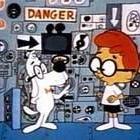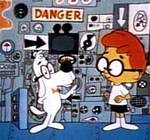-
Posts
2,171 -
Joined
-
Last visited
-
Donations
0.00 USD
Content Type
Profiles
Forums
Events
Blogs
Everything posted by jazztrain
-
Yikes! That was fast. Package arrived today. Many thanks David.
-

Rampart Street Paraders strange LP (test pressing?)
jazztrain replied to solar_myth's topic in Discography
I think the XLP prefix is what Columbia used for 12 inch mono releases. I would expect they would be sequential, or roughly so, by issue but some additional work would be needed to confirm this. I had the same thought that you might have a test pressing for some anthology, perhaps not issued, by the Rampart Street Paraders. Bruno Andracchio might have been the owner of the disc. If you search on that name, you will find some hits. -

Rampart Street Paraders strange LP (test pressing?)
jazztrain replied to solar_myth's topic in Discography
In the wax on my copy of "Dixieland, My Dixieland" are: XLP37061-1B on Side 1 and XLP37062-1B on Side 2. The tunes on that album are as follows: I'm Gonna Sit RIght Down and Write Myself A Letter (Love's Got Me In A) Lazy Mood Dixieland Shuffle After You've Gone Oh, Baby! When It's Sleepy Time Down South My Monday Date Chinatown, My Chinatown -
PM sent on: James Moody. Return from Overbrook. Red Mitchell/Jimmy Rowles. Red 'n' Me Enrico Pieranunzi. Ballads.
-
Not to my knowledge. My understanding is that the Kamuca albums were recorded privately and were then leased to Concord by Kamuca for issue on LP. I don't think that Concord currently has rights to reissue them. My recollection is that the first one (called "Richie") was originally issued by Kamuca on another label (Jazzz). I have CD-R copies of them (plus part of the date with Dave Frishberg) courtesy of another member. Ironically, I've been playing them in the car the last two days.
-
Chuck: Glad that you'll be reissuing the session, especially with the bonus track. Interestingly, he used the same rhythm section on his session for Delmark roughly 17.5 years later. Do you know if was a working group?
-
Bob: Actually, there are two takes of "Between the Devil and the Deep Blue Sea" from the January 25, 1932 recording session. The session seems to have been recorded for Columbia, but both Columbia and Okeh issued material from this date and a few other subsequent sessions on 78. The Columbia matrix numbers for the two issued takes of this tune are 152086-3 and 152086-4. The best Armstrong discography is by Jos Willems: "All of Me: The Complete Discography of Louis Armstrong." Regarding the two takes of BTDATDBS, Willems writes: <<< Louis sings on take -3 ... "Now I don't want you, but I hate to lose you. Ah, mamma, you've got me in between..." In take -4 he sings "Oh I don't want you, but I 'ate to lose you. You've got me in between..."
-
Not sure where to put this, but Concord has apparently purchased Rounder Records: Rounder Purchase Press Release
-

Tadd Dameron -- the composer, arranger, and pianist
jazztrain replied to Rooster_Ties's topic in Artists
As far as Tadd tribute dates, the ones that come to mind are the Barry Harris trio date (already mentioned), the Dameronia albums (also already mentioned), and an Andy Laverne album ("Tadd's Delight") on Steeplechase. Here's a link to that one: Tadd's Delight -
Sorry to hear this news. He definitely was someone who should have been more widely known. The LP you issued ("Indian Summer") is a long-time favorite that stereojack turned me onto years ago.
-
Dan: That's wonderful news! The most frustrating aspect of the numerous references to the recordings in the Max Miller archives was the inability to find anything about it. Any additional information you could provide about the recordings would be of interest. Of course any opportunity to hear the music would be welcome. Many thanks for checking in!
-
The clarinetist? Sounds interesting... I have a number of clarinet/piano and clarinet/guitar duos, but are there other solo clarinet albums or performances that people can think of? John Carter perhaps? Dolphy on bass clarinet (Is there a solo "God Bless the Child")? Or a Jimmy Giuffre blues (with his tapping foot)?
-

Pat Patrick
jazztrain replied to Tom in RI's topic in Jazz In Print - Periodicals, Books, Newspapers, etc...
OK. Here's an initial response to a question that I sent to Allen Bush at Berklee asking about Pat Patrick and Ellington. He forwarded the following information from Allan Chase: >>> I have often heard it stated that Pat Patrick played with Ellington, but I don't know when and how much. Bill can shed more light on this, but in the display cabinet at yesterday's reception, a clarinet part to Ellington's "The Mooche" was there, and it had a note from Pat written in the upper right saying something like "Duke Ellington wrote this part for ME from memory" and there may be a date. I haven't looked at Ellington's handwritten music before, but I noticed that the flags on some eighth notes were backwards and there was something else slightly anomalous about the notation. I just looked at it for a minute, though. That seems to be conclusive enough, to me -- he played with Ellington somewhat, in some capacity, at least as a sub and maybe more. When I met Pat in 1978, and we talked for 20 or 30 minutes, we talked about the great musicians he had played with, and he definitely mentioned Coltrane, Monk, and Sun Ra and he may have mentioned Ellington, but I'm not sure. >>> So, perhaps we're getting closer to a more definitive answer. -

Pat Patrick
jazztrain replied to Tom in RI's topic in Jazz In Print - Periodicals, Books, Newspapers, etc...
OK. Last one. Need to get back to some work. There's an earlier (and inconclusive) discussion here from 2004: All About Jazz I'll try to contact someone at Berklee to see if he can provide any details on what might be in the collection that would confirm if and when Patrick played with Ellington. I'll let you know if I hear anything (but am leaving on vacation in a couple of days). -

Pat Patrick
jazztrain replied to Tom in RI's topic in Jazz In Print - Periodicals, Books, Newspapers, etc...
OK. Some more digging turns up this entry from Lewis Porter to the jazz.com encyclopedia concerning trumpeter William (Butler) Fielder: William (Butler) Fielder The entry includes the following: >>> In late 1960, Fielder returned to Mississippi for a few months, then moved to New York City where he roomed with Pat Patrick on 84th Street. Around this time, he subbed in the Duke Ellington Orchestra..." >>> Perhaps Fielder brought Patrick around when he subbed with Ellington and perhaps Patrick sat in. Fielder doesn't show up in DESOR either... -

Pat Patrick
jazztrain replied to Tom in RI's topic in Jazz In Print - Periodicals, Books, Newspapers, etc...
A quick search turned up a discussion from the Vancouver Jazz Forum. Look at post #2: Vancouver Jazz Forum A quick look at the summary in that discussion doesn't convince me that's there's any hard evidence there that Patrick played with Ellington. At the bottom, there's a suggestion that he might have done so in 1960 when he was away from Sun Ra. I took a look through DESOR for Ellington dates and sessions in 1960. The reed section for most of the year was as expected: Jimmy Hamilton, Johnny Hodges, Russell Procope, Paul Gonsalves, and Harry Carney. In early October 1960, it looks like Hodges left and was replaced for a while by Paul Horn. Hodges returned partway through 1961 and Horn left. No sign of Patrick. -

Pat Patrick
jazztrain replied to Tom in RI's topic in Jazz In Print - Periodicals, Books, Newspapers, etc...
Interesting question. The updated DESOR (Duke Ellington's Story on Records), which includes information on live dates that may never have been issued, does not show any appearance of Patrick with Ellington. -

Pat Patrick
jazztrain replied to Tom in RI's topic in Jazz In Print - Periodicals, Books, Newspapers, etc...
Here's a more recent article from today's Boston Globe: Boston Globe -
Any suggestions for music venues on Maui?
-
A photo of the sculpture appears on page 140 of Robert Reisner's "Bird: the Legend of Charlie Parker." You can view it from Google Books. I haven't been able to figure out a way to post links or images from Google Books. Here's a long url which might work. No guarantees: http://books.google.com/books?id=qwX3f_CC2SUC&pg=PA141&lpg=PA141&dq=%22Charlie+Parker%22,+sculpture,+%22Julie+Macdonald%22,+-uncanny&source=bl&ots=HkHOacT4Sc&sig=1XojGWhDtEt3ttzELPQaw8qMF3w&hl=en&ei=B-OnS7y2F8GclgeAxojDDA&sa=X&oi=book_result&ct=result&resnum=5&ved=0CBYQ6AEwBA#v=onepage&q=&f=false
-
Found the following on line: >>> The final recordings of the Jimmie Lunceford Orchestra (prior to its leader's death) are included on this excellent CD. The 13 selections (three sessions from 1946-47) generally avoid the influence of bebop and stick to Lunceford's trademark sound and swing style. Tenor saxophonist and vocalist Joe Thomas was the only one of the major Lunceford soloists to still be with the big band although trumpeter Bob Mitchell, clarinetist Omer Simeon and altoist Kurt Bradford (featured on "The 'Jimmies'") also have some solo space, such up-and-coming players as trumpeter Joe Wilder and trombonist Al Grey make early appearances and former trombone star Trummy Young returns for four numbers, doing a remake of his hit "Margie." This is a historical and easy-to-enjoy CD overall, put out by Savoy in 1989. ~ Scott Yanow, All Music Guide >>> So, if you believe the notes (and in this case I trust my ears that it's probably not Simeon), then the alto featured on "The Jimmies" is Kurt (or Kirkland) Bradford.
-
I don't think I have the LP but will check shortly (just checked; don't have it). I listened to a partial clip on line (including the ending). It sounds somewhat riper than my recollection of Simeon's alto work, but I'd like to hear the full performance before rendering an opinion. I don't think Lunceford played much, if at all, with the band; I think he was the musical director. As far as the title, Eric Townley offers the following in "Tell Your Story": "Slang for nervousness, fright, and sometimes delirium tremens, and probably used here as a pun on Jimmie Lunceford and his musicians also."
-
I've always heard it as Nor-DEEN.
-
Mathew: I suspect the Miles Ahead site is wrong. People searching for song composers are often lazy or not sufficiently thorough. BMI lists 11 different compositions with that name, including the John Lewis composition and the Stegmeyer/Mourant composition.
-
Mathew: I think the likely answer is that there's more than one tune with the same title. I checked All Music Guide (not always reliable but occasionally handy). It shows several songs with that title. The John Lewis composition was recorded by Miles at the Royal Roost and apparently by Ronnie Scott as well. The tune by Bill Stegmeyer and Walter Mourant has been recorded by Jacques Gauthe. There appear to be still more tunes by that name, including one by John Pisano.
_forumlogo.png.a607ef20a6e0c299ab2aa6443aa1f32e.png)
